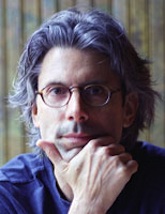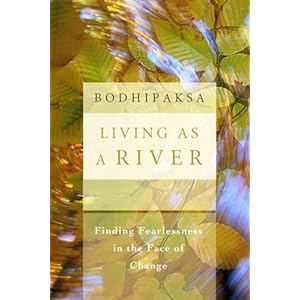There are decades of research showing that cultural is not only a power shaping force on mind and consciousness, but that mind is embedded in the interpersonal aspect of culture and does not exist in the sense we know it without culture. The difference is structuralism (Wilber's approach, certainly influenced by the work of Piaget) vs. constructionism (Vygoksty, Bowlby, Bruner, Gergen, et al.).
Both are true.
This article from APA Monitor looks at new advances in cultural neuroscience. Rather than the observational intuitions of the past, we are now able to measure changes in the brain as a result of culture, making the field much more evidence based than in the past.
When an American thinks about whether he is honest, his brain activity looks very different than when he thinks about whether another person is honest, even a close relative. That’s not true for Chinese people. When a Chinese man evaluates whether he is honest, his brain activity looks almost identical to when he is thinking about whether his mother is honest.
That finding — that American and Chinese brains function differently when considering traits of themselves versus traits of others (Neuroimage, Vol. 34, No. 3) — supports behavioral studies that have found that people from collectivist cultures, such as China, think of themselves as deeply connected to other people in their lives, while Americans adhere to a strong sense of individuality.
The study also shows the power of cultural neuroscience, the growing field that uses brain-imaging technology to deepen the understanding of how environment and beliefs can shape mental function. Barely heard of just five years ago, the field has become a vibrant area of research, and the University of Michigan, the University of California, Los Angeles, and Emory University have created cultural neuroscience centers. In addition, in April a cultural neuroscience meeting at the University of Michigan attracted such psychology luminaries as Hazel Markus, PhD, Michael Posner, PhD, Steve Suomi, PhD, and Claude Steele, PhD, to discuss their work in the context of cultural neuroscience.
The field has made headlines that include, “Chinese, English speakers do math differently,” from MSNBC about a study by Yiyuan Tang of Dalian University of Technology in Dalian, China, which found that Chinese natives make use of different parts of the brain than Americans do to process numbers. Another headline article in USA Today, “Eastern ‘collectivist’ culture may buffer against depression” found that people from East Asian cultures are more likely to have a gene that buffers them from depression than people from Western cultures, as discovered by Northwestern University psychologist Joan Chiao, PhD.
Findings like these demonstrate that neuroscience can measure cultural differences. But such results also corroborate the behavioral work of cultural psychology. As the field matures, it may even change the way we think about brain development.
“Cultural neuroscience gives us a window into how much the brain can be changed by the environment,” says University of Texas at Dallas psychologist Denise C. Park, PhD, who has conducted several cultural neuroscience studies. “It will deepen our understanding of how environment and beliefs can shape cognitive function.”
Culture shapes biology
Tufts University psychologist Nalini Ambady, PhD, is one of the field’s pioneers. Her work has found that even as people perceive the same stimulus, their brains may activate differently.
For example, in a study headed by her graduate student Jonathan Freeman and published last year in Neuroimage (Vol. 47, No. 1), the researchers used fMRI to measure brain activity in American and Japanese study participants when they viewed silhouettes of bodies in postures considered “dominant” — standing tall, arms crossed, for example — and “submissive” — head and arms hanging down, for instance.
Ambady’s group based the study on historical data showing that East-Asian cultures value submissiveness, while Western cultures value dominance. In fact, they found, they could see this cultural distinction in the way the brain responds to visual input. When Americans viewed dominant silhouettes, but not submissive ones, reward circuitry fired in the brain’s limbic system. The opposite happened among Japanese participants; their reward circuitry fired in response to submissive, but not dominant, silhouettes.
In addition, the magnitude of the brain’s response to the images correlated precisely with self-reports of how much participants valued dominance and submissiveness, says Ambady. The more a participant supported sentences stating that it’s good to be in control, the stronger the reward circuitry fired when he or she viewed a dominant posture.
“We see that what the brain finds rewarding reflects the values of the dominant culture,” says Ambady. “People can see the same stimulus but have completely different neural responses.”
Park and her colleagues find that cultures may actually see the world differently and that scientists can pick up this difference with brain imaging. In a 2010 study published in Social Cognitive and Affective Neuroscience, they used fMRI to examine brain activity while American and native Chinese participants processed a series of visual scenes. The scenes consisted of a central object superimposed onto either a congruent — giraffe on a savanna — or incongruent — giraffe on a football field — background.
Using an analysis of the imaging data they developed in those earlier studies, the researchers showed that Chinese participants’ perceptual areas of the brain responded more to objects superimposed on incongruent scenes than objects matching their surroundings. This was not the case for Americans, who didn’t appear to be affected by the background at all.
These findings support the idea that native Chinese, as opposed to Americans, are more sensitive to the context in which an object is embedded, and so focus greater attention on that object when it’s in an inconsistent context, says Park. Most recently, a study by Park’s group, in press in Social Cognitive and Affective Neuroscience demonstrated that Westerners process human faces more actively than East Asians, consistent with the Western focus on individuality.
In effect, she adds, East Asians and Americans literally see things differently — and that finding could have major implications for models of cross-cultural communication.
Seeing things differently may also affect how easily different cultures perform cognitive tasks, even when they use the same brain circuitry. Such research may someday shed light on why some cultures appear more skilled at certain real-life cognitive problems than others, but right now researchers are looking at very simple tasks. For example, behavioral work by University of Michigan psychologist Shinobu Kitayama, PhD, and his colleagues showed that people from Japan are far better at judging the length of a line relative to the size of a box in which it’s drawn, while Americans are far better at judging the absolute length of the same line. They attribute this difference to findings from other studies showing that Americans pay more attention to details and Asians pay more attention to context.
Last year, Stanford University postdoc Trey Hedden, PhD, and his colleagues used fMRI to re-examine these findings. Like Kitayama, they used the framed-line task: Participants see a square with a line drawn partway down the middle. They then see a larger box and either have to draw a line the same absolute length as the first line or a line the same relative length compared with the bigger size of the new box.
Again, Americans did better on the absolute test and Japanese did better on the relative test, but this time the researchers could see what was happening in their brains. It turns out that both Americans and Japanese use the same brain areas for both tests, but when they’re doing the test that is more difficult for them, they also engage an area of the brain associated with increased attention.
“This finding shows that the brain compensates for tasks that we’re not typically exposed to through our culture by turning on an attention circuit to help us,” says Kitayama. In contrast, tasks that are commonplace become automatic and don’t require extra concentration.
Biology shapes culture
While cultural neuroscience has mostly shown how culture shapes biology, researchers are also beginning to examine how biology shapes culture.
Northwestern University’s Joan Chiao, PhD, for example, has found that people who live in collectivist cultures are more likely than those in individualistic cultures to have a form of the serotonin transporter gene — the S-allele — that correlates with higher rates of negative affect, anxiety and depression.
In contrast to what you might expect from the genes alone, she also found that people from collectivist societies are less likely to be depressed. This suggests that collectivism, which tends to produce lower levels of negative affect, may have co-evolved with the S-allele, says Chiao, who published her findings in the Proceedings of the Royal Society of Biological Science (Vol. 277, No. 1,681). In other words, she explains, societies of people with the S-allele developed a collectivist culture that reduced stress and, therefore, risk of depression by emphasizing social harmony and social support.
“Culture may make us rethink the role of this serotonin transporter physiology,” says University of Michigan neuroscientist Israel Liberzon, MD. “If it’s very common in East Asian groups, but the prevalence of depression is not higher, it somehow interacts with their lives differently.”
Developing standards
While such neuroscience findings are great headline fodder, the field must move forward with rigor and caution, says Stanford University’s Markus, who is a pioneer of cultural psychology. It’s not enough, she says, simply to scan the brains of people from different “cultures” — defined by language, nationality or ethnicity — and make assumptions about cognitive or perceptual differences. By themselves, these are meaningless categories, she adds.
“To make progress in our understanding of how cultures shape brains and brains shape culture,” she says, “we need to know what psychological and behavioral tendencies are associated with these social categories and how these tendencies are linked to brain function.”
Chiao learned this lesson while conducting an fMRI study, published last year in Human Brain Mapping (Vol. 30, No. 9). The study looked at activity in the brain’s medial prefrontal cortex — an area associated with a sense of self — while people from Japan and the United States assessed whether self-descriptive phrases applied to them. The researchers sought to find a biological explanation for past research showing that people from collectivist cultures relate more strongly to contextual self-descriptions, such as “When I’m with my mother, I’m honest.” People from already defined individualistic cultures relate more strongly to general self-descriptions such as “I’m honest.”
When Chiao and her colleagues compared participants along ethnic lines, they saw no difference in brain activity. Differences appeared only after they grouped people based on how strongly they valued collectivism or individualism: Regardless of ethnicity, the medial prefrontal cortex was most active when individualists read general self-descriptions and when collectivists read contextual self-descriptions.
This work demonstrates how variable cultural values can be, even within cultural groups, as people filter information from their environment and form their own self-concepts, says Chiao.
That’s why University of California, Los Angeles, graduate student Elizabeth Losin and colleagues include the need to carefully define culture among eight guidelines for cultural neuroscience research they lay out in a paper published this year in Social Cognitive and Affective Neuroscience (Vol. 5, No. 2–3). They also suggest guidelines on the need to match study participants on how long they’ve been immersed in the culture under study; to ensure that study materials are culturally appropriate; and to consider potential genetic variation within a cultural group that might account for differences in brain development.
In the end, cultural neuroscience could usher in an era of greater understanding between people from different cultures.
“My greatest hope is that it has implications for negotiations between countries; that people on both sides understand that they might not be talking about the same thing even if they’re looking at the same thing,” says Park.
Beth Azar is a writer in Portland, Ore.














